WHS duties with bushfire smoke
As a person conducting a business or undertaking (PCBU), you must consider all health and safety risks from bushfires, including from bushfire smoke at your workplace.
Failure to take steps to manage the risk of bushfire smoke can result in a breach of work health and safety (WHS) laws.
You must identify, assess and control hazards and risks from air pollution, including bushfire smoke in the workplace. Examples of the steps you can take to work safely when there is bushfire smoke are provided in this factsheet.
Unpredictable winds during bushfires can mean rapid changes in bushfire smoke levels - make sure you can quickly implement control measures.
Plan for bushfire smoke events
Doing a risk assessment helps you to think about what could happen if any of your workers are exposed to bushfires and bushfire smoke and the chance of it happening.
Some steps you can take as part of your planning process are:
- Identify and raise awareness on bushfire smoke hazards and the risks to your workers.
- Identify controls to put in place to protect your workers from exposure to bushfire smoke.
- Talk with your co-workers about how to work safely when there is bushfire smoke.
- Encourage workers to talk to their doctor if they are more at risk of adverse health effects from bushfire smoke.
- Read the Department of Health and Aged Care’s enHealth guidance on managing prolonged smoke events from landscape fires
- Visit your local health authority website for local information on bushfire smoke.
Prepare your workplace for bushfire smoke
These are some things you can do in your workplace to prepare for bushfire smoke events:
- Talk to your workers about the risks of bushfire smoke exposure and the control measures to minimise exposure.
- Identify sensitive workers and talk to them about their needs and how you can help keep them safe.
- Sensitive workers include:
- older workers
- workers with heart or lung conditions such as asthma or heart disease
- workers with diabetes
- pregnant workers, and
- workers with or recovering from respiratory illness.
- Sensitive workers include:
- Check door and window seals.
- Check air conditioners are working properly and that filters have been cleaned or replaced.
- If needed, install an air purifier with a high efficiency particulate air (HEPA) filter and have a supply of spare filters.
- Make personal protective equipment (PPE) available, such as P2/N95 masks and eye protection, and provide guidance on how to use them correctly
- Masks may make breathing difficult and can increase heat-related illness risk.
- Ensure communication with workers by having a mobile phone or other means, particularly if workers are working alone.
- Download and display the working safely when there is bushfire smoke poster.
When introducing controls into the workplace, you must be aware that they can create new or increased risks. If this is the case, you must ensure you minimise these additional risks as well. For example, the risk of heat stress may be increased in workers wearing a P2/N95 mask, as the mask traps warm air and sweat, making it harder for the worker to cool down.
For more information on managing the risks of bushfire smoke, see the Working safely in bushfire smoke infographic.
Monitor bushfire smoke levels
To monitor smoke near you, you should:
- Check your local Air Quality Index.
- Listen to your local TV and radio news for emergency updates.
- Check on weather warnings and forecasts where you are working.
- Regularly check your local health and emergency services websites in the – Australian Capital Territory, New South Wales, Northern Territory, Queensland, South Australia, Victoria, Tasmania or Western Australia and follow their social media accounts.
You can also use these apps:
Respond to warnings of bushfire smoke levels
If there is a bushfire smoke event near you:
- Follow advice from emergency services and government health agencies. Support workers experiencing health effects from the smoke.
- Anyone experiencing wheezing, chest tightness, or difficulty breathing from exposure to bushfire smoke should seek urgent medical attention by calling 000.
- Implement identified controls, such as:
- Rescheduling outdoor work where possible.
- Increasing rest times and have them indoors, if possible.
- Rotating staff who work outside to alternate tasks indoors.
- Closing windows and doors while it’s smoky – open doors and windows during smoke-free periods.
- Setting air conditioners to recycle mode, including in the building and vehicles to ensure smoke is not drawn in from outside.
- Using closed cab machinery and vehicles
- Using an air purifier.
When moving workers or work activities indoors, it is important to ensure the air quality inside is not worse than air quality outdoors.
In addition, you should make available:
- water, eye drops and saline nasal sprays to reduce throat, eye and nose irritation.
- clean P2/N95 respirators – making sure they are fitted correctly and replaced when they are dirty, damaged, or wet.
For information on fitting and wearing P2/N95 masks, see our wearing a P2/N95 mask infographic.
If it’s not safe to work
A worker has the right to stop unsafe work if there’s a serious risk to their health and safety and should tell their employer when its unsafe to work.
They must:
- notify you as soon as possible.
- be available to do suitable alternative work to reduce or eliminate the risk of exposure to the smoke.
Health and safety representatives (HSR) can direct a worker to stop unsafe work if the worker’s health and safety is at serious risk. The HSR must try to resolve the issue with you, as the PCBU, first.
